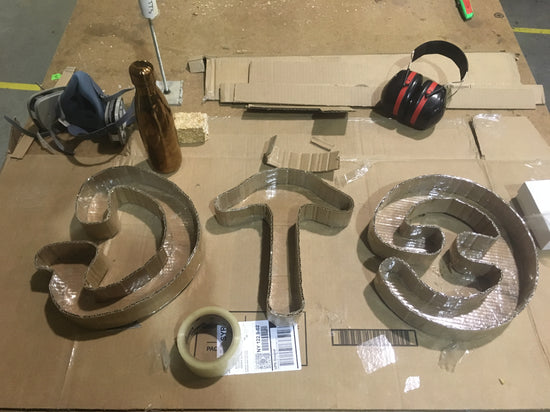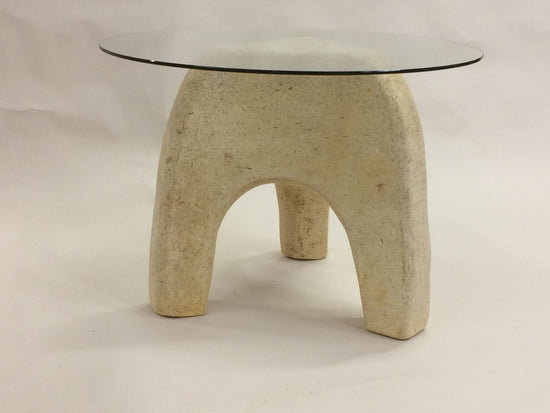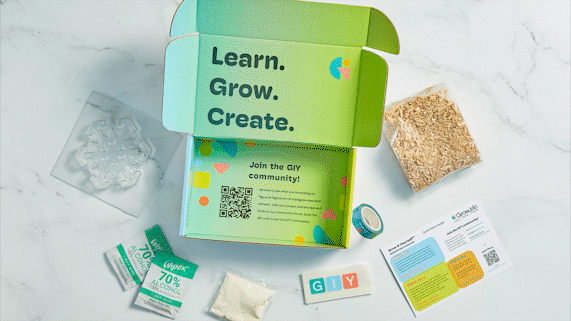Ecovative grows its packaging on the fibers of agricultural plants. The macromolecules that compose those fibers, and the mineral nutrients that are bound to them, can be recycled in your own garden and used to grow vegetables! To prove this, I created compost from Myco Foam packaging samples that were mixed with ordinary kitchen food scraps (no meat!), and turned ten times once a week in a compost tumbler throughout the growing season of 2013. For comparative purposes, I also created compost using fallen leaves from the sugar maple trees around my house, similarly mixed with kitchen scraps and turned in a compost tumbler.
Then, in 2014 I created soil by mixing each of the two types of compost with pure sand in a 40:60 compost-to-sand ratio. I filled three large planting pots about 10 inches in diameter with each type of soil, and I planted carrot seeds in them during late May. The carrots got a slow start because of difficulty penetrating a weed barrier that I had installed on top of each pot, but by late September I produced beautiful bright orange carrots from both the soil made with composted Myco Foam, and the soil made with composted maple leaves.

To check on the nutritional content of the carrots, I sent them to the Nutrient Analysis Laboratory at Cornell University. The results showed that in the major mineral nutrients that humans need, carrots grown in soil made with both Myco Foam and maple leaves compared favorably to carrots typically sold in supermarkets and analyzed by USDA:
| Nutrient element in carrots | Myco Foam soil | Maple leaf soil | USDA typical carrot |
| Calcium % | 0.39 | 0.69 | 0.29 |
| Magnesium % | 0.17 | 0.14 | 0.11 |
| Potassium % | 3.1 | 3.1 | 2.8 |
| Phosphorus % | 0.54 | 0.60 | 0.31 |
The carrots grown in the maple leaf soil were amazingly high in calcium! It turns out that maple trees need a lot of calcium, and they return it to the soil when their leaves fall. The plant fibers we use to grow Myco Foam packaging don’t use as much calcium as maple trees, which explains why the carrots grown in Myco Foam don’t have as much calcium as the ones grown in soil containing maple leaves. But the carrots grown from Myco Foam are still darn good when you compare them to a USDA standard carrot! At Ecovative, we encourage people to compost our Mushroom Materials, so that the plant matter and nutrients in them can return to the soil and nourish new growth. As a result of this experiment, we now know that the compost really is good for your garden!
- Julian Hadley




